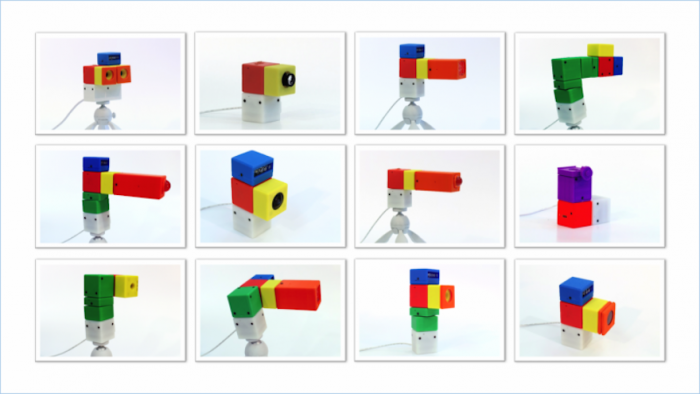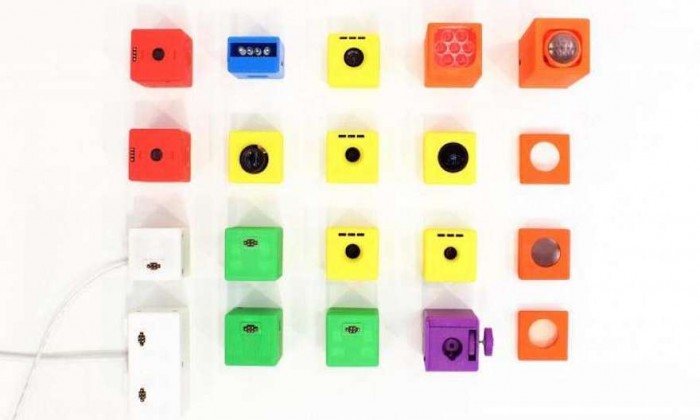Columbia University’s computer science professor Shree Nayar and visiting scientist Makoto Odamaki have come up with a modular imaging system that enables the user to create various camera types out of colourful block components. The system, called Cambits reimagines the constrained design and capabilities of the standard “boxy” camera.
Cambits is comprised of five 3D-printed plastic blocks and each one has a different colour and function. There is a block for sensors, a block for light sources, a block for actuators, a block for lenses, and a block for optical attachments. The blocks connect to each other magnetically, and can therefore be easily configured to create a range of cameras with different functionalities, from panoramic to microscopic imaging.
The base block is designed to connect to a host computer, tablet or smartphone, which registers the type of camera by identifying the built-in IDs of the individual blocks. The host device is able to store footage and provide a menu of imaging options for the user.
Makoto Odamaki’s circuit board architecture, built within each component, is integral to the seamless functioning and transfer of data between the blocks. The circuit board is designed to convey control signals as well as provide power downstream and receive data upstream.
“There are so many exciting advances in computational photography these days,” remarks professor Shree Nayar. “We hope this reconfigurable system will open the door to new avenues of creativity, bringing new dimensions to an art form we all enjoy.”







